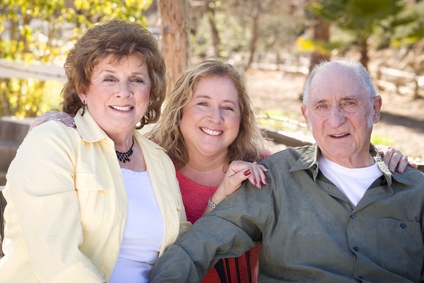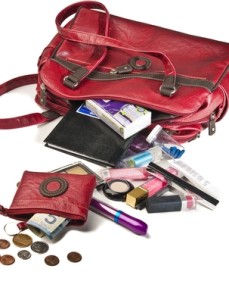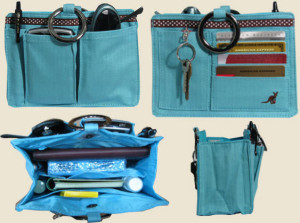Handy Travel Tips
 By now you all know how much I love to travel. I love the different types of food, seeing the amazing countryside, architecture and meeting new people. Some trips are pure relaxation like going to Hawaii, golfing, some are more adventurous like skiing in the Alps, and some are road trips for a quick weekend getaway. I never find it challenging getting ready for a trip because of being organized and because of using these handy travel tips.
By now you all know how much I love to travel. I love the different types of food, seeing the amazing countryside, architecture and meeting new people. Some trips are pure relaxation like going to Hawaii, golfing, some are more adventurous like skiing in the Alps, and some are road trips for a quick weekend getaway. I never find it challenging getting ready for a trip because of being organized and because of using these handy travel tips.
How would you like to be ready to go on a vacation at the drop of a hat?
Do you work like crazy prior to going on a vacation? How would you like that to be different?
Here are some general rules of thumb. Please let me know what handy travel tips you have and we can add them to the list.
Tip#1: First Aid Kit. Have a first aid kit packed at all times. Upon returning home from a vacation refill your first aid kit before putting it away. You want to be ready at the drop of a hat. Make sure your kit has any specific medications you take, pain meds, sunscreen (even if it is a ski trip you still need it), Band-Aids, cold/flu medication, and essential oils like tea tree, lavender and eucalyptus. Store your first aid kit in your suitcase when not traveling.
Tip#2: Toiletry Bag. This is another bag that you can have ready to go at all times. Again as soon as you get home refill any empty containers before storing your toiletry bag in your suitcase. I highly recommend using travel size shampoo, conditioner, cleaners and face creams. I have seen so many oversized containers of very expensive lotions in the security bins. One ounce is the maximum for carry on. Have a complete collection of make-up prepacked too. I take my half full containers and use these for travel. For example mascara is good for 3 months. After 2 and a half months I put my mascara in my travel make-up bag.
Tip#3: Pack Light. How many times have you arrived at your destination unpacked your case and only worn half of what you packed? Come on be honest! Travel with a colour theme. It might be black and white or it might be brown and orange. You know orange is my favorite colour. Make sure each item goes with at least 3 other items in your case.
Tip#4: Re-useable bags. Leave a few re-useable bags in your suitcase. These bags come in handy for shopping and dirty laundry. I like to leave a few ziplock bags in my case as well. They work wonders for wet swimsuits, any snacks you might take on the road, or dirty shoes.
Tip#5: Be prepared. Well in advance of any vacation make sure your passport is up to date. Check and see if you need any specific shots or visas. Have a house sitter lined up along with a backup plan. Did you know your house/condo insurance may not be valid if you do not have a house sitter or at least have someone checking on your house every other day? Do you have pets? Don’t wait till the last minute to deal with them. Get any foreign currency needed.
Look forward to meeting you on the train station platform!

 Are you one of these people who can hardly wait to retire?
Are you one of these people who can hardly wait to retire? Are you the adult child of an aging senior?
Are you the adult child of an aging senior? What can you tell about a person’s shape, size and condition of their wallet? There are wallets that look like filing cabinets, ones that look like there is nothing in them and then there are some wallets that are held together by an elastic band.
What can you tell about a person’s shape, size and condition of their wallet? There are wallets that look like filing cabinets, ones that look like there is nothing in them and then there are some wallets that are held together by an elastic band. Want to be wallet-less? Put the contents of your wallet in my favorite purse organizer. The Pouchee purse organizer. There is a place for your credit cards, money, lipstick, eye glasses and receipts. It makes changing purses fast and easy.
Want to be wallet-less? Put the contents of your wallet in my favorite purse organizer. The Pouchee purse organizer. There is a place for your credit cards, money, lipstick, eye glasses and receipts. It makes changing purses fast and easy.  How much does your purse weigh?
How much does your purse weigh? Step #5 Organize the essential contents back in your purse. Some people like to use zip lock bags, some use little cosmetic bags to separate different items. I like the Pouchee Purse organizer (shown in the image on the left). This purse organizer allows you to put the entire contents of your purse in this one little pouch. You will be able to change your purse to match each outfit. (They are perfect in diaper bags, gym bags or brief cases.)
Step #5 Organize the essential contents back in your purse. Some people like to use zip lock bags, some use little cosmetic bags to separate different items. I like the Pouchee Purse organizer (shown in the image on the left). This purse organizer allows you to put the entire contents of your purse in this one little pouch. You will be able to change your purse to match each outfit. (They are perfect in diaper bags, gym bags or brief cases.) Two of our grand daughters have started selling magazines as a school fundraiser. They both want to be TOP sellers. At the beginning of the school year we get a phone call asking us to buy, buy, buy.
Two of our grand daughters have started selling magazines as a school fundraiser. They both want to be TOP sellers. At the beginning of the school year we get a phone call asking us to buy, buy, buy. I just got off the phone with a client (let’s call her Mary) who has EVERY issue of Oprah magazine. I know other people who have the same collection. Are you one of them? This is what I suggested to her.
I just got off the phone with a client (let’s call her Mary) who has EVERY issue of Oprah magazine. I know other people who have the same collection. Are you one of them? This is what I suggested to her. A recent UK study found that people on average check their phones 150 times a day. 150! On average, people are checking 23 times a day for messaging, 22 times for voice calls, and 18 times to get the time. Not to mention mindlessly scrolling through emails and social media. It’s almost mind-boggling to consider how much time that wastes, and how automatically we do these things without any real awareness.
A recent UK study found that people on average check their phones 150 times a day. 150! On average, people are checking 23 times a day for messaging, 22 times for voice calls, and 18 times to get the time. Not to mention mindlessly scrolling through emails and social media. It’s almost mind-boggling to consider how much time that wastes, and how automatically we do these things without any real awareness.